The best innovative textile solutions for vegans are those that use waste from the food industry to make vegan silk fabric and vegan leather. Not only do they help to reduce waste, but they are also biodegradable. From frumat apple leather to mango fruit leather to desserto vegan leather made from cactus, and even leather made from grapes, there are now some incredible options available.
Increasingly, vegan leather is made to look like real leather and it is increasingly efficient. We have previously discussed other innovative textile solutions such as Piñatex, made from pineapple leaves, and fabric made from banana fiber.
So let’s explore these innovative textile solutions for vegans that are made from fruit.
1. Desserto Vegan Leather made from Cactus
Leather made from cactus is the latest eco friendly vegan leather fabric. Two Mexican entrepreneurs, Adriàn Lòpez Velarde and Marte Càzarez have developed an innovative new brand, called Desserto. After two years of research and development, they are turning the leaves of the cactus plant into leather. 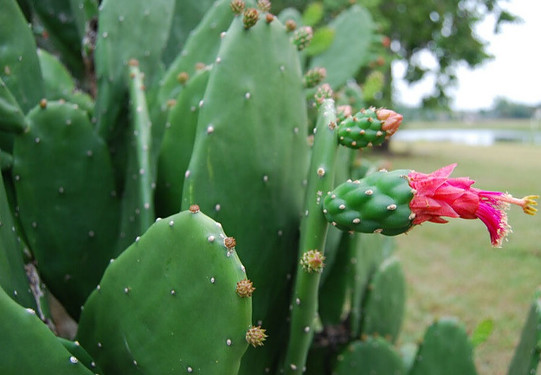
They were inspired to do research and development, because of other plant derived leather alternatives like Pinatex, which is made from pineapple leaves.
Nopal cactus or otherwise known as prickly pear, is a genus in the cactus family, Cactaceae. It is native to the Southern Hemisphere where it grows in warm, dry climates.
The cactus plant has wide, flat, branching pads and have a combination of detachable spines and tufts of barbed bristles, which can cause significant allergic skin reactions.
Desserto is a Mexican brand that is using nopal cactus leaves to turn it into organic, natural, cruelty-free leather. It contains no toxic chemicals, phthalates or PVC. Desserto is the first leather made from cactus and the material has the potential to create a sustainable vegan leather market.
The cactus plant requires almost no water and grows abundantly throughout Mexico, so it is a stable, abundant supply of raw material. Prickly pear is rich in anti-oxidants and forms a crucial part of the Mexican diet. The pads, flowers and fruits are all edible and as there is a lot of water that is stored in the pads, it is used as a water source in the desert. The staple crop is used for animal feed and produces abundant amounts of fruits. It is also used for medicinal purposes and as a dye for textiles.
Desserto has their own ranch in Mexico where they grow the hundred percent organic cacti. As it is a native cactus, the plantations match biodiversity and blend with the wild flora and fauna. Mature cactus leaves are harvested every six to eight months and are cut without harming the plant. The plants require very little water, so there is no irrigation, just natural rainwater will keep them happy. Cactus plantations last for about eight years.
After cutting the mature leaves, they are left to dry in the sun for three days until the exact humidity levels have been reached. So no additional energy is used for the drying process. Making the cactus leather is a patented process. 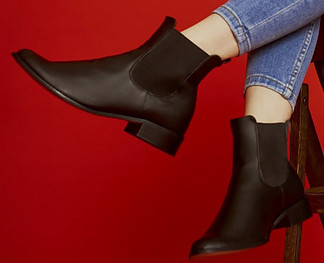
The strong molecular bonding makes the cactus leather highly resistant to abrasion and rubbing and it is very durable.
Cactus leather is organic, soft, durable, breathable, elastic and partially biodegradable. The quality is high enough to be used for garments, accessories, furniture and vehicle interiors and it can be customized.
It is also a sustainable leather alternative that is free of PVC and phthalates. It is resistant to bacteria and mildew and is naturally fire resistant.
As it is a very new innovation, production is still on a small scale. Desserto is trying to have small quantities available so that the material can be accessible to small companies. They are also working with potential suppliers to make the material available to a bigger market.
Any remaining organic cactus material that is not used for making leather, is sold to the local food industry or exported. So there is nothing that goes to waste.
2. Orange Fiber Textile is the new Vegan Silk Fabric
Orange Fiber is an Italian company that was co-founded by Enrica Arena and Adriana Santanocito in February 2014. 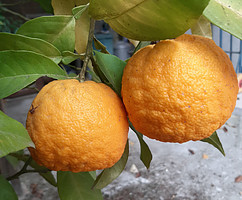 They developed an orange fiber textile in collaboration with the Polythechnic University of Milan. The Sicilian company is using citrus by-products to make sustainable fabrics.
They developed an orange fiber textile in collaboration with the Polythechnic University of Milan. The Sicilian company is using citrus by-products to make sustainable fabrics.
The patent for the innovative fabric made from citrus byproducts, was registered in August 2013 and in September 2014 the first prototypes were presented. Orange Fiber won the Global Change Award in 2015, which is an annual award that was initiated by H&M Foundation. Winning the award allowed them to move forward in their Research and Development much faster and form a solid foundation for the business.
In Italy alone there is 700,000 tonnes of citrus waste generated each year. The first plant to extract the pulp from the citrus peel was opened in Sicily in December 2015. Citrus pulp, the residue that is left when orange juice is commercially produced, is transformed into silky fabric. 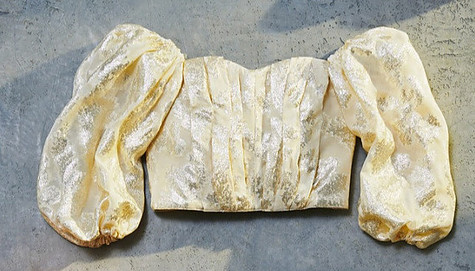
The silk like, sheer, luxurious fabric is made from cellulose fiber, which is extracted from citrus waste. Through a patented process, cellulose is extracted from citrus pulp.
The resulting fiber is suitable for spinning and it can be printed and colored like other fabrics. Orange fiber can be used on its own or it can be mixed with other fibers for spinning and weaving.
The result is a silky, ethereal, sustainable and innovative textile solution for vegan silk fabric. Photo credit Orange Fiber
The fabric is suitable to be used for clothing and accessories. Salvatore Ferragamo, the Italian luxury fashion brand, was the first to incorporate it in their capsule collection and it was launched on Earth Day in April 2017. It will be used in the H&M Conscious Exclusive collection.
With today’s efforts of relying on sustainable materials and reducing waste, this is one of the best innovative textile solutions for vegans, manufacturing textiles from citrus by-products. What others regarded as a waste problem, Orange Fiber turned into an opportunity, and giving a new life to waste from the food industry.
3. Grape or Vine Leather
Grape or vine leather is a vegan leather that is produced using the waste materials from the wine industry.  An Italian company, Vegea, developed the product. Vegea was founded in Milan in 2016, with the aim to develop plant-based alternatives to fossil-fuel synthetics. The name Vegea comes from Vegan (VEG) and Mother Earth (GEA).
An Italian company, Vegea, developed the product. Vegea was founded in Milan in 2016, with the aim to develop plant-based alternatives to fossil-fuel synthetics. The name Vegea comes from Vegan (VEG) and Mother Earth (GEA).
Three years of research by architect Gianpiero Tessitore and industrial chemist Francesco Merlino, led them to discover that the waste product from wine production, is ideal to make a hundred percent vegetal leather. By using leftovers from wine making, they are creating a vegan leather. Grape skins, seeds and stalks are all used, without using any toxic solvents, heavy metals or dangerous and harmful substances, during the production process.
Vegea won the Global Change Award in 2017 which enabled them to work on prototypes for shoes, 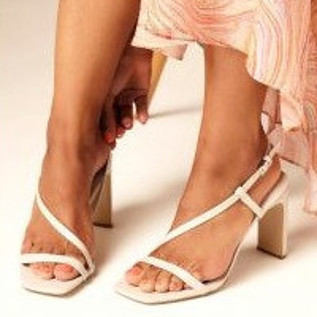 handbags and dresses. They won Horizon 2020, the biggest European Union (EU) research and innovation program and was recognized as one of the best new millennium start-ups in Europe.
handbags and dresses. They won Horizon 2020, the biggest European Union (EU) research and innovation program and was recognized as one of the best new millennium start-ups in Europe.
The bio material is suitable for use in the fashion, furniture, automotive and transportation and also the packaging industry. Vegea is leveraging the use of renewable resources and production processes, to use vegetable raw materials and biomass.
The V-textile has a high vegetal and recycled raw material content, such as vegetal oils and natural fibers from the agricultural industry and is free of solvents, animal friendly and Made in Italy. No chemicals or water is required to produce it.
The vegan coated fabric is available in different versions, which differ in aesthetic and technical properties, such as thickness, weight, elasticity, backing textile, finishing texture and the bio-based content. Colors are available according to customer requests.
Fashion brand & Other Stories have used Vegea to produce sandals and a clutch. H&M Conscious collection will be using it, and Bentley announced in July 2019 that Vegea grape vine leather will be used in the interior of the new electric car that will be launched by Bentley in 2020.
Vegea grape leather is one of the best innovative textile solutions for vegans and another sustainable solution for using waste from the food industry.
4. Frumat Apple Leather
Frumat apple leather is a bio-based vegan leather material that is derived from organic apples, 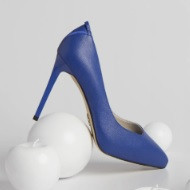 a byproduct of the apple juice industry. Apple peels and cores are used to make a vegan leather and it was developed by an Italian company, Frumat.
a byproduct of the apple juice industry. Apple peels and cores are used to make a vegan leather and it was developed by an Italian company, Frumat.
The apple waste is obtained from apples that are grown in the Italian mountains. Fibers are extracted from dry apple peels, which is a by-product of apple juice.
Apples are harvested and goes for juicing and jam making. After the production, the discarded apples are rescued. The apple peels and cores are ground into a fine powder and dried naturally. The powder is mixed with non-toxic, organic pigment and transformed into bio-based leather. So a waste product is transformed into a vegan friendly fabric.
Frumat was founded by Hannes Parth and their apple leather won the “Technology and Innovation” award at the Green Carpet Fashion event in 2018. Frumat apple leather is made from 50% apple skins and 50% polyurethane. 
VEERAH is the first brand to use it in their luxury range of women’s heels.
The Italian brand Womsh is using the apple leather in their range of vegan sneakers. The upper and lining are both made using apple leather, with recycled plastic laces and recyclable rubber soles.
Volkswagen will be incorporating the innovative new textile in the upholstery for a new electric car, due to be released in 2021.
Frumat apple leather is made from a renewable resource and is another awesome way in which to use waste from the food industry.
5. Mango Fruit Leather
Two young Dutch designers, Hugo de Boon and Koen Meerkerk, have founded Fruitleather Rotterdam to produce mango leather. Discarded mangoes are transformed into a durable leather look-alike vegan material. 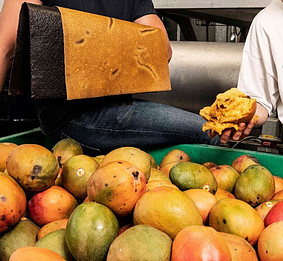
The mangoes are put into a machine that slices and chops them and a mango puree is obtained. This is mixed and stirred and then poured onto baking trays and leveled. The sheets are baked in the oven for several hours. The materials are all natural, although one of the options is to have a polyester backing.
Currently this innovative textile solution is only available in sheets of 40 cm by 60 cm (0.25 sq m). Each sheet is hand made by the two of them.
It can be embossed to give different leather textures and colors can be made according to the customer’s choice, although for a minimum of twenty sheets.
A water repellent coating can be applied and the cutting lines can be treated with a wax.
The mango fruit leather can be used to make shoes, bags and for furniture. London based brand Luxtra, is using the fabric to produce handbags and wallets.
Innovative Textile Solutions for Vegans Are Possible
Unfortunately most fabrics that are classified as vegan, are basically plastic, which is made from fossil fuels and not sustainable or environmentally friendly. 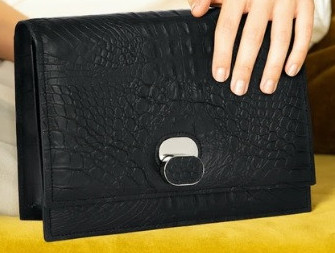 So despite the great progress that has been made in the search for alternative fibers, vegan options are not always certain to be eco sustainable.
So despite the great progress that has been made in the search for alternative fibers, vegan options are not always certain to be eco sustainable.
Many vegan leathers are actually plastic materials which is not sustainable or eco friendly. So yes, we want alternative materials, but they need to be eco sustainable as well.
Here we have seen that vegan silk fabric is possible, as well as eco vegan leather, like frumat apple leather and desserto vegan leather made from cactus.
I hope you have enjoyed discovering how natural resources and waste from the food industry are being turned into textiles. If you do have any questions or suggestions about innovative textile solutions for vegans, then please leave them below and I will get back to you.

Hi Line,
just stumbled across your post. I am researching the potential use of avocado skins for similar products. Any idea of where I might find additional information or are you aware of any industrial engineering firms or similar outfits who would be able to point me into the right direction?
thank you,
Thomas
Hi Thomas, this is a very interesting question, one which unfortunately I cannot help you with at the moment. If I do find anything I will certainly let you know. Please feel free to share any research that you feel would be relevant and helpful. All the best, Liné
This should be renamed textile solutions that everyone should be buying. You have introduced us to another world of amazing products that I think that everyone should be buying if they care about the planet. These products are so well put together that I will certainly be buying. I like the fact that the leather products all look great and I can only imagine that the feel amazing.
I even liked the silk blouse from the oranges which is such a great way to utilise the citrus waste.
Obviously, the more people that buy these products the cheaper they become. Are they expensive to buy compared to their average counterparts?
Thank you
Many of these textiles made from food waste or fruit is still in the early stages of production, so is still not that widely available. The vegan silk made from orange is being used by Salvatore Ferragamo, the Italian designer, which is on the upper side of pricing. The grape leather is being sold at around €40 for a piece that is around 60 cm and the handbags that are made from it are on the pricey side of between £250 and £400. Veerah apple leather shoes retail at around $250 – $300 a pair, so designer prices at the moment.
With higher production, prices should hopefully be coming down.
We humans are so innovative, aren’t we? Who would have believed we could make leather from food scraps or cactus? I am not a Vegan, but am happy that these products are made without having to kill an animal to do so. Better yet, they are made from food scraps that might be thrown away anyway.
The products seem quite attractive. They look like they would be great to own. And how fun it would be to know that you were wearing or using something made of, say, mango scraps. Who would have believed it? Great information.
Hi Fran, it is indeed incredible that waste from the food industry is being used to make textiles, and they very pretty as well. Liné
Im not a vegan but thoroughly impressed these options are out there for vegans.
When I read this article I was amazed at what was being made and with materials I would have never thought of. I mean who would have thought wine brewers could use their waste to make leather.
If you have a minute I would be interested in some cost comparisons.
Thank you for taking the time to write a great article
Hi Dale, most of these companies are selling their materials to manufacturers that would then turn it into products. That means that one will have to contact the companies directly to enquire about their prices. It also seems to depend on the quantity that you would want to buy. The mango fruit leather is available at around €60 for a sheet of 40 cm by 60 cm, if that gives you an idea. Liné
This is such an unbelievably important topic. I had no idea that these textile options existed before today! I’ve been trying my best to stop my old buying habits and convert myself into buying all sustainable, investment-type pieces that will last for many years. I’m tired of throwing things away. It’s wasteful for me, my wallet, and the environment!
I’m a huge leather-look fan, and plastic “pleathers” are just not the way to go. I find that they start flaking in only a few years and are very obviously artificial materials. I’m very intrigued by the natural leathers you’ve listed here, particularly the grape vine leather. It just sounds so suave. I’m going to search for more on it right now! Thank you for this sustainable info!!!
Hi Maria, it is awesome what is being done with waste from the food industry. I am not a fan of any of the plastic fabrics, so to find natural alternatives is certainly the way to go. Liné
Hi Line
very nice review. things i didn’t know it exist even. the Mango fruit leather sounds interesting. it can be made upon the customer request with a variety of colours and using options are wide. thanks for sharing this article. what is your experience with mango fruit leather and with other fruits leather? do you find any noticeable difference from regular products in the market?
thanks
Hi there, I have not had the pleasure yet to own any of these unique innovativions. Most of these are quite expensive but when production increases, it will hopefully become more affordable to the man in the street. Liné
I must say this is really innovative and I am super interested as I have a lot of vegan friends and I know they would what stuffs like this…I really loved the Orange Fiber Textile is the new Vegan Silk Fabric, I had a long though of how many love product that could come out of it….thanks a lot for sharing the awesome article.
It is amazing what can be done with waste from the food industry. I also particularly like the vegan silk fabric that is so soft and with a beautiful drape. Liné